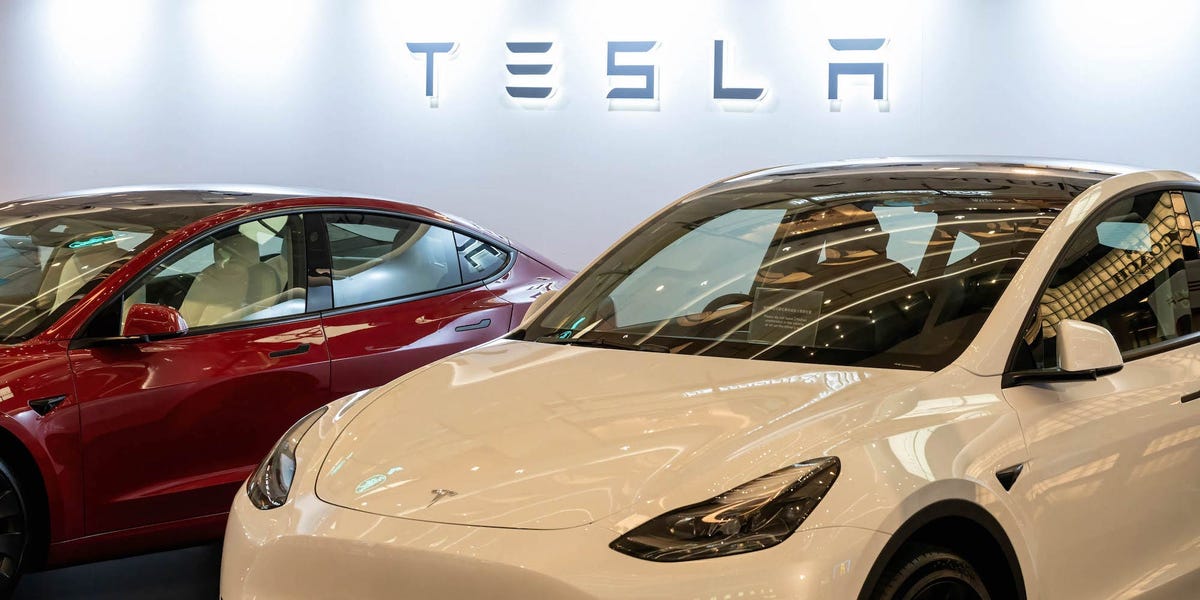Tesla was so swamped with complaints about driving ranges that it created a secret team to cancel owners’ service appointments, source says::To suppress the volume of complaints the automaker created a secret “Diversion Team” in Las Vegas to cancel appointments, Reuters reported.
Instead of displaying the true driving range, the software provided a “rosy” projection of how far cars could drive before needing to be recharged, the report said. The distance EVs can travel before needing to be recharged is one of the main disadvantages the cars face in comparison with gas vehicles. The order to inflate the driving range displayed on the cars was given by Tesla’s CEO Elon Musk around 10 years ago, according to Reuters.
If you know the true answer, but you give your customer a false answer to make your product look better than it is, there’s a word for that. It’s “fraud”.
Counterpoint: Ive taken numerous road trips in both of our family’s Tesla (Tesli?) as well as a couple loaners, and the built in navigation is always spot on with the estimates. Like it’s eerie how it can predict within a percentage point on a 2 hour or more drive within the first 10 minutes of a trip.
Range anxiety really is only experienced by those that it doesn’t affect (i.e. potential buyers)
It sounds like your talking about you put an address in gps and it gives you an accurate number.
The article is talking about it’s version of a gas gauge, where it says X miles remaining, and that is what’s inflated.
Trying to lie on the gps would cause more complaints as people got stranded, the fraud was lying on the “gas gauge” where it would be hard for a customer to realize they had less juice than they were being told.
But it’s addressing the same thing, no? The number it displays is the epa range and any state of charge. I prefer to just show a percentage but either way it’s understood to be an estimate. If you want a true value just enter a destination (you can do a multi leg trip as well)
Also this article is so vague it’s almost useless. I highly doubt this team was just straight up closing service tickets; so more than likely they trained a single team on the talking points of the display number vs real world and thus improved efficiency with service tickets. The article even admits the cars didn’t need any actual service
I said it in another reply but it’s not unlike a phone telling you it has 12 hours remaining, but then you play a graphically intense game and it dies in 2. The margins are much smaller here but the point is still valid
They made the numbers less accurate because people complained real distance per charge isn’t what’s advertised.
I have no idea why so many keep bending over backwards to make fraud seem normal.
But if you’ve read this whole thread and still don’t get it, I don’t think I’m going to keep trying.
Removed by mod
This is demonstrably false. If you get a brand new Tesla and charge it to 100%, the range on the screen will be the EPA range. That’s not a “rosy” prediction, that’s the prediction that companies must legally use in their sales material in the US.
Also, the BI article says this was 10 years ago, but the Reuters article opens talking about the Model 3, which was only released 5 years ago. But it’s coming from an unnamed source who claims it was a decade ago - not exactly reliable.
Huh, I have a Niro EV and it tries pretty hard to extrapolate the range based on the current conditions, so for example if it’s colder outside than the range is less (because it needs to keep the batteries warm), and if you switch on air conditioning or the heater then it immediately lowers the range to account for the extra drain. Occasionally it gets the range prediction wrong, but it really does seem to try to do its best. I just assumed that all EVs work this way.
Niro is from Nissan though. Most reputable manufacturers do produce pretty solid EVs. Tesla is a scam.
Kia makes the Niro, not Nissan.
Ah right. Kia is also more reputable though.
Tesla doesn’t really offer anything to the EV market that other more established makers don’t. Except for poor build quality, panel gaps, and a memelord of a CEO.
In fairness, I am also jealous of their Supercharger network, having had some bad experiences on the very few occasions when I’ve needed a DC fast charge and it seemed like nothing around was working. I hope that it gets upgraded to support CCS in at least some locations so I can start being able to use them.
The superchargers are also stupid, but more so in a regulatory sense. If EVs are to be viable they ought have standardised connectors and methods of charging. Having a private company own that is beyond idiotic.




